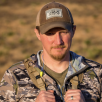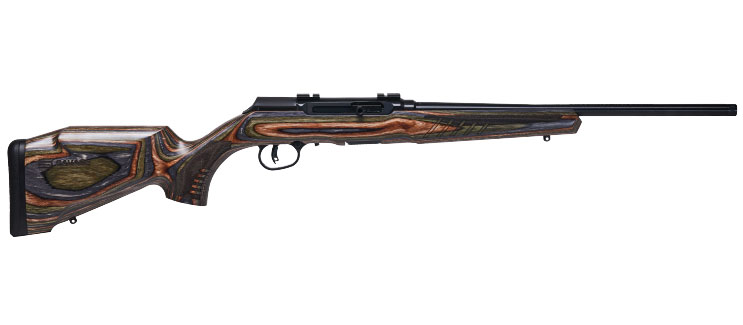We may earn revenue from the products available on this page and participate in affiliate programs. Learn More ›
In the past 10 years, sportsmen have experienced an enlightenment of sorts. Suppressors (a.k.a. silencers and cans,) once widely (and incorrectly) considered illegal to possess, have grown in popularity among shooters and hunters. I learned the truth back in 2007 or 2008, and now use suppressors whenever possible.
Growing up, the only exposure I had to cans was in movies and on television, which portrayed them inaccurately and as tools suited only for secret agents, hitmen, and other criminals. If that sounds familiar, this will give you the basic run-down on suppressor functionality, how to pick the best one for you, and what it actually takes to get one.
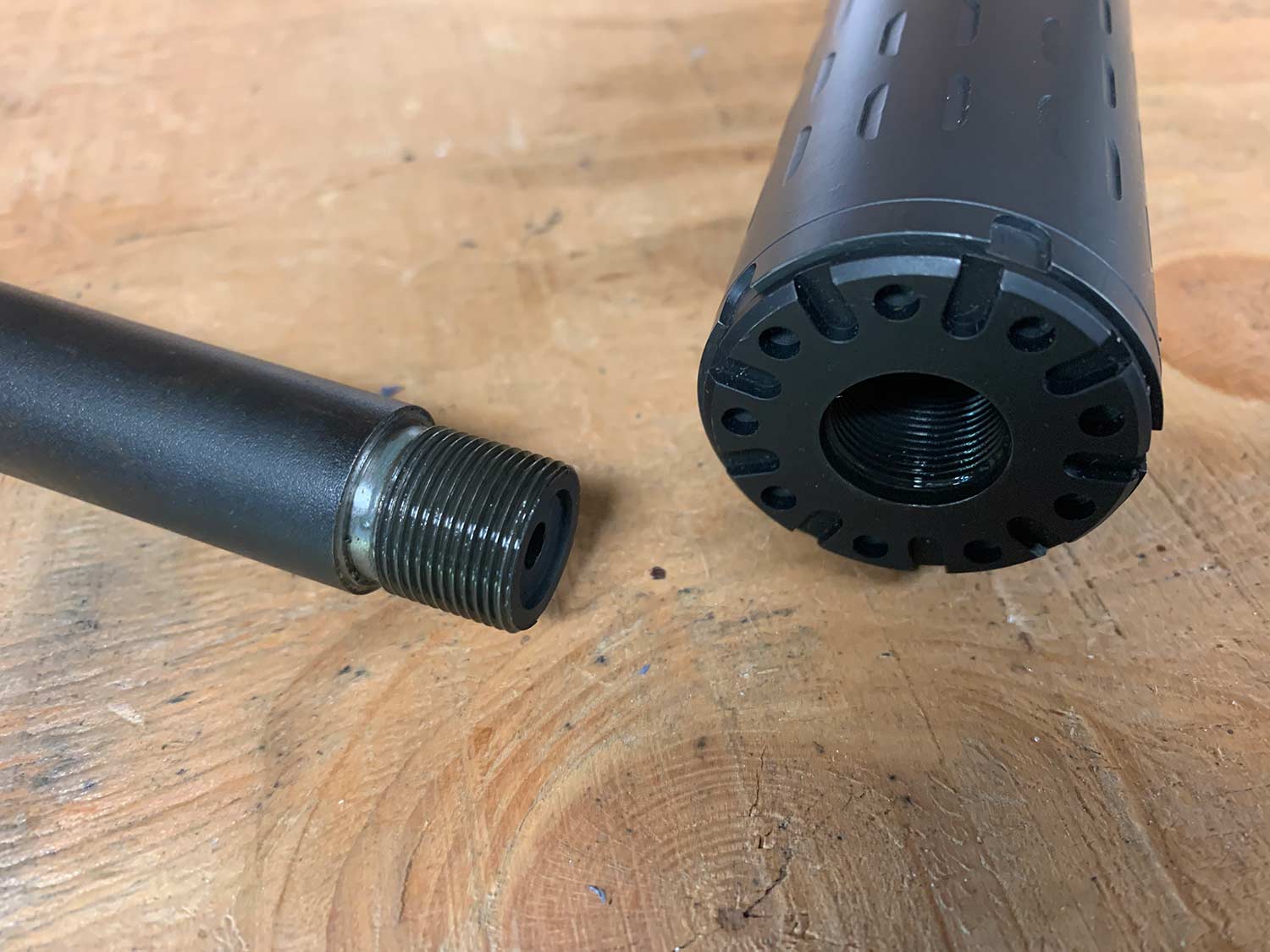
1. What They Do and Don’t Do
The biggest myth about silencers or suppressors is they completely quiet a firearm. You may be surprised to discover that the iconic soft “chirp” that silencers produce in movies isn’t the case in the real world. The devices do significantly reduce the sound signature of a gunshot, but will not completely silence it. The sound signature and decibel level that suppressors produce varies depending on the cartridge and specific type of firearm. The generally accepted threshold for ear-safe impulse sound levels is 140 decibels (similar to the report of a normal .22 LR), and your average centerfire rifle or handgun will be in the 160-175dB range, or higher if using a muzzle brake. A suppressor will usually decrease that to the 110-130dB, depending on the gun and ammunition velocity. For comparison, the average BB gun is usually right around 100dB. Minimizing muzzle blast makes shooting just about anything more pleasant, especially for newer or younger shooters.
In addition to sound and muzzle blast reduction, suppressors will also reduce recoil and often boost velocity slightly by keeping some pressurization behind the bullet after it’s left the muzzle, but still inside the suppressor.
Whether hunting or recreational shooting, suppressors are a great tool that can help you have a more enjoyable experience (and save your hearing).

2. How they Work
Despite all the mystique and misunderstanding, your typical suppressor is a very simple tool. At the most basic, they are essentially just a muffler for your gun. They’re a tube, containing a series of baffles, or barriers, that create individual chambers inside the tube, with endcaps and a hole all the way through the middle. Much of the sound of a gunshot as we know it, comes from the high-velocity, rapidly expanding gasses from combustion of the powder driving the bullet out of the muzzle. With a suppressor on the end of the muzzle, the gasses are allowed to continue to expand, but are slowed and redirected by the series of baffles and chambers, exiting the front at a much slower (and quieter) speed. Taming down this muzzle blast reduces both sound and recoil, but with supersonic bullets, you’re still going to hear that characteristic “crack” of the bullet breaking the sound barrier.
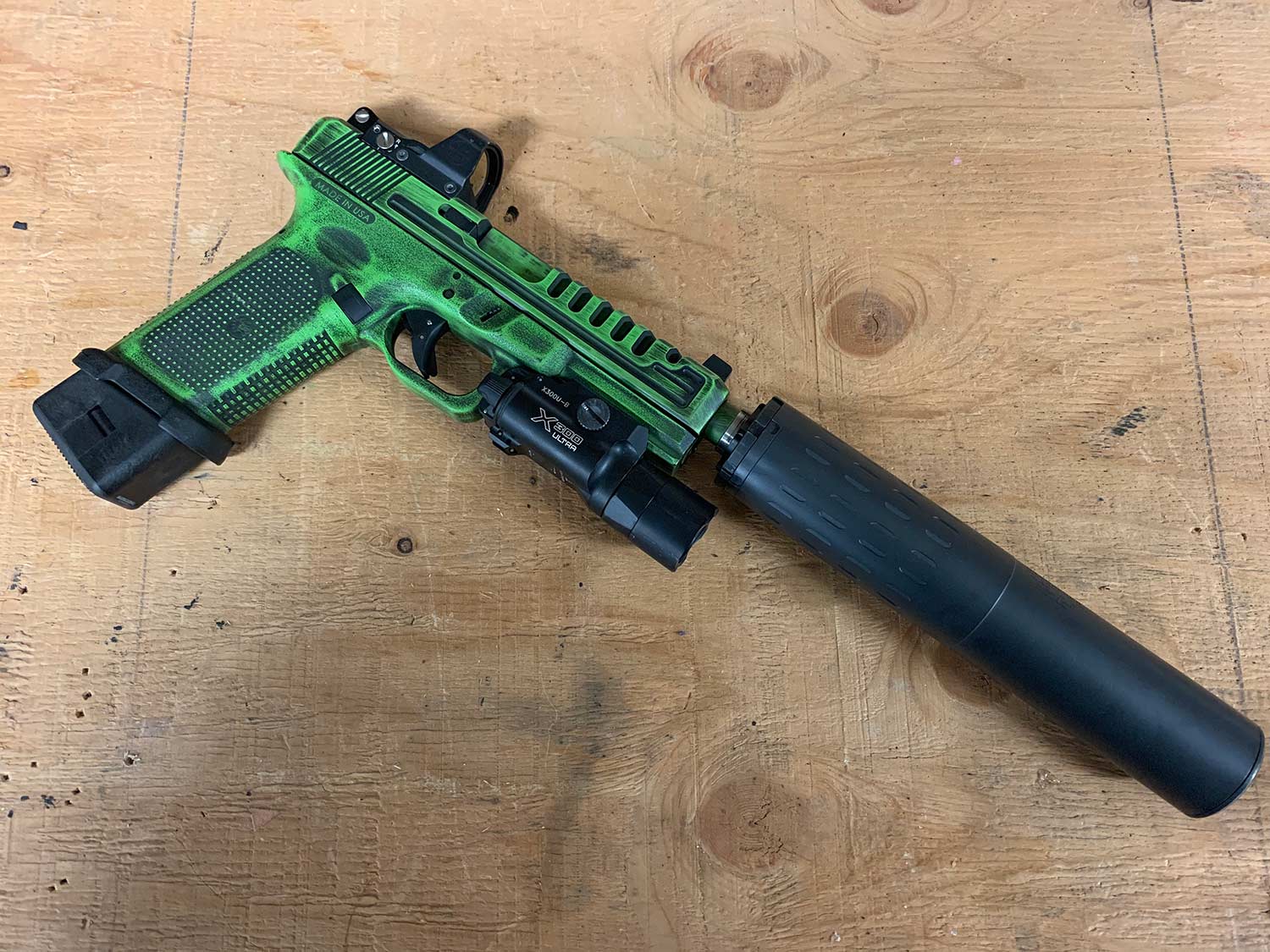
3. Mounting Options
We’ve all seen movie characters pull a suppressor from their pocket and thread it onto the muzzle of their pistol, but there are a couple different options for mounting cans, and you need to consider what you want.
Direct Thread: The most basic method for suppressor mounting is threading the can directly onto the muzzle of the gun. This is very common for hunting rifles and rifles that you intend to use primarily with the suppressor attached, as well as almost all rimfire cans. Many rifles come threaded from the factory these days, but any competent gunsmith can thread one that isn’t. Pistol cans are typically direct thread as well, however most centerfire handguns require the can to have a device called a recoil booster (which uses a spring and piston) to help the gun cycle reliably. The booster is essentially part of the suppressor and threads right onto the muzzle.
Quick-Detach: “QD” suppressors are very popular as well, especially with AR and other semi-auto rifles. Typically, a muzzle brake or flash suppressor is mounted (and stays) on the rifle, and the rear end of the can will slip over the brake, and either thread onto it, or have one of the various snap-lock designs to keep it secure. The suppressor can quickly and easily be removed and reattached, allowing for easy stowage, and use of the rifle with or without it, and even on multiple guns. This is also a great option for high-recoiling, long-range rifles that you want to put a brake on, but also have the option of shooting suppressed.
Integrated Suppressors: Although nothing new, a smaller, niche market of suppressors is also something to look into. The integral suppressor is built into the gun itself, and not removeable. With many of these, the expansion chambers are built back over the barrel in order to be more compact and user-friendly. The Ruger 10/22 and MK .22LR pistol series are some of the most popular for this and have a variety of aftermarket, integrally suppressed barrels available. The SilencerCo Maxim 9 is an example of a ground-up pistol built around a unique-looking suppressor.

4. Selecting a Suppressor
Suppressors are fairly expensive and currently come with a pretty long waiting period, so it’s wise to carefully consider your purchase. There are lots of companies producing great suppressors for rifles, handguns, and shotguns. It can be a little overwhelming considering all the options out there, so here’s a way to help narrow it down.
Rimfire, centerfire, or shotgun: The first fork in the road is whether you want a rimfire, centerfire, or shotgun can. If you’re looking for a shotgun can, your options are fairly limited, and the Salvo 12 from SilencerCo is a great option. Many, if not most rimfire cans are rated for anything from a .22LR to the .17HMR range, but will not hold up to centerfire pressures. Some centerfire cans will fit on a rimfire, but often, cartridges like the .22LR don’t have enough pressure to make the suppressor work properly.
Rimfire: There are plenty of rimfire suppressors, and they are a great one to start with. Shooting suppressed .22’s is fun, and most of them reduce the sound signature to well-below ear safe levels. Many rimfire cans will disassemble for cleaning purposes, some are one-piece, and many of them are aluminum. I’ve never heard of anyone gunking up a one-piece .22 can to the point of being ineffective, but it does feel nice to be able to take them apart and give them a good cleaning now and then. Often, the one-piece cans are significantly cheaper, and perform very well, so it’s something to consider when making your purchase.
Centerfire: Select your centerfire suppressor based on what gun or guns you’d like to use it with. If you plan on buying several, it’s not a bad idea to select cans that are more specialized to your specific use. If you want a specific .223 can for your AR, or a 9mm can for your pistol, you can find specific, better-suited options than the more modular suppressors. For example, if you’re going to be putting a high volume of rounds downrange, it doesn’t hurt to go with a full-auto rated model, which are built to withstand the extreme heat of continuous fire. Pay attention to barrel length ratings as well, as many suppressors are rated for a certain barrel length of each caliber.
When doing your shopping, also keep in mind that typically, with centerfire cans, especially rifles, you can over-bore. That means you can use a suppressor made for a larger caliber, with a smaller caliber. My first suppressor was a Suppressed Armament Systems Arbiter, a solid, stainless-steel .30 caliber can, rated for .300 Win. Mag. It threaded over muzzle brakes, so I bought brakes for both my .308 and my .223 AR. Although the can is much heavier than a dedicated .223 can, it works great (even on a .17 HMR) and was a good compromise for me.
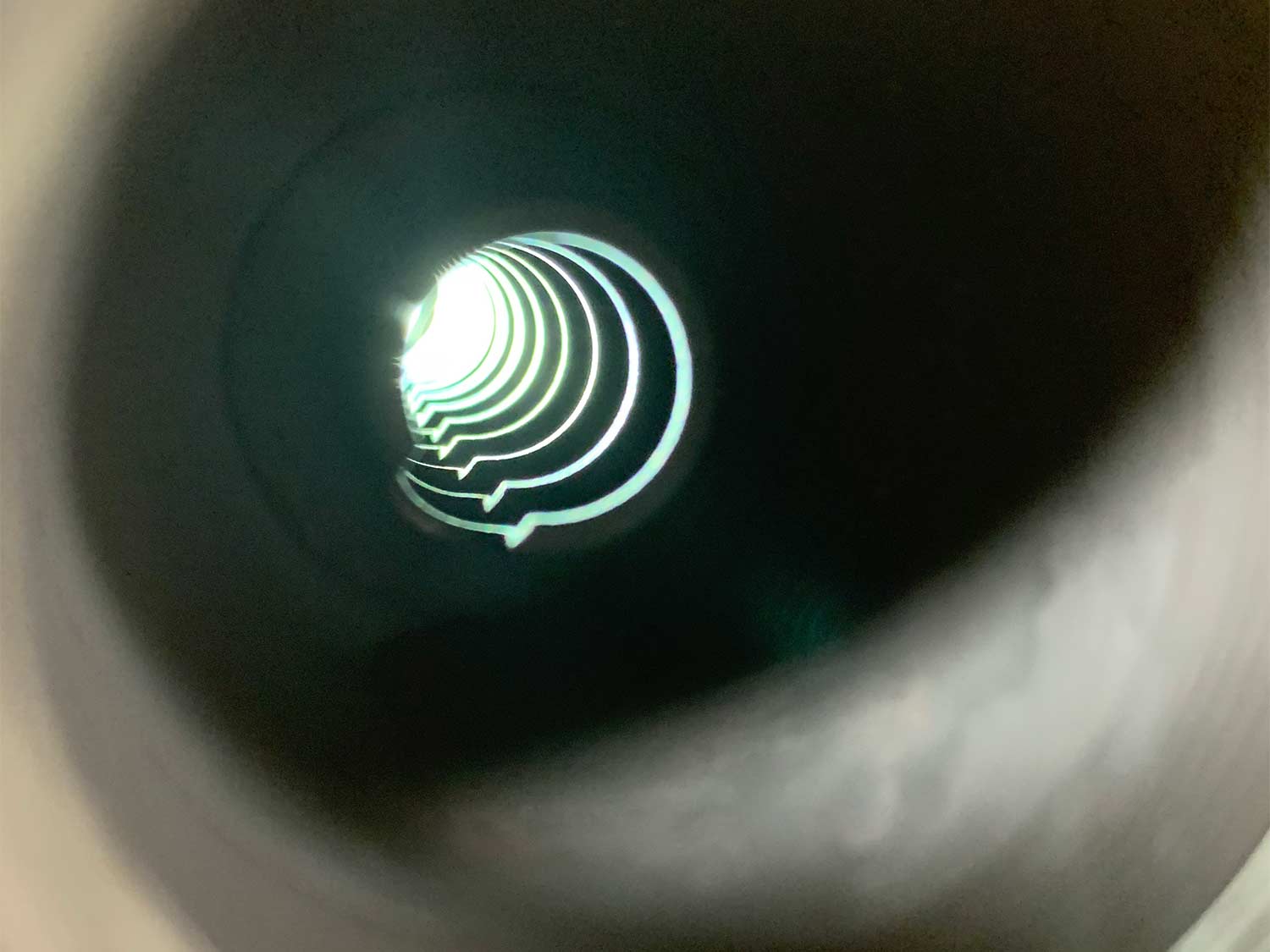
5. Modular Suppressors
Even more versatile than that, are modular cans like the SilencerCo Hybrid. The Hybrid is technically a .46-caliber can, as that is the bore size of its baffles. This suppressor is designed to handle pressures up to a .338 Lapua and be used on large-bore cartridges like the .45-70. It’s much more than that though. It features a removeable muzzle cap that can be changed out for different bore diameters down to .22-caliber. The other end of the tube is also modular, and can use direct thread, ASR quick detach, and handgun piston kits. Once you have the suppressor in-hand, you can purchase any of these modular parts. I regularly use mine on everything from a .17 Hornet, 9mm Glock, 10mm Glock, .223, 6.5 Creedmoor, .300 Win. Mag, and if I had a .45-70, I’d be using it on that too.
I have yet to put my hands on it, but SilencerCo has also recently released another modular can that isn’t as large-bore. It’s not only modular in caliber, but in length, and full-auto rated for certain calibers as well. If you’re probably only going to get one, it’s a good idea to consider a modular suppressor, and several manufacturers have great options.
6. How to Get One
Silencers are perfectly legal to own in 42 states and legal to hunt with in 34, but in some cases are further restricted by locality, and any dealer in your area should be able to help clarify some of these nuanced specifics. You can see where your state falls on most manufacturers websites, as well as at www.americansuppressorassociation.com. This website provides a lot of info, but if you still have questions, don’t be afraid to ask your local dealer on specifics. The qualifications to purchase are that you must live in one of the 42 states where they are legal to own and be a United States resident. You must be legally able to purchase a firearm, pass a BATFE background check, and be 21 years old to purchase from a dealer. The actual process for buying a suppressor seems much more complicated than it is, but there are some hoops to jump through, so here are the basics for the average individual to buy a can:
- Select and purchase the suppressor from a Class 3 dealer.
- Fill out an ATF form 4 (dealer will supply and assist).
- Have the form 4 signed by appropriate local law enforcement agency.
- Get official-sized passport photos.
- Get an official set of fingerprint cards done (some police stations and other places, like the UPS Store, offer this service).
- Return form 4, passport photos, fingerprints, and a check for $200 to the ATF back to your class 3 dealer.
- Wait for the ATF to return your form 4 with your tax stamp attached and approved.
There are some nuances and variations to the rules and this process, but don’t let it scare you off. Your dealer will be able to help you along and answer specific questions you might have about the process. The wait is typically long. You’ll often have to wait six to nine months to be approved, but once it’s done, it is yours until you die or transfer it to someone else.
Read Next: Silencerco Omega 36M: The Ultimate Do-All Suppressor?
With a little bit of knowledge and exposure, there really isn’t much mystery at all to silencers. They are a fantastic shooting tool that arguably make shooting a more pleasant, safe, and fun experience for new and experienced shooters alike.
